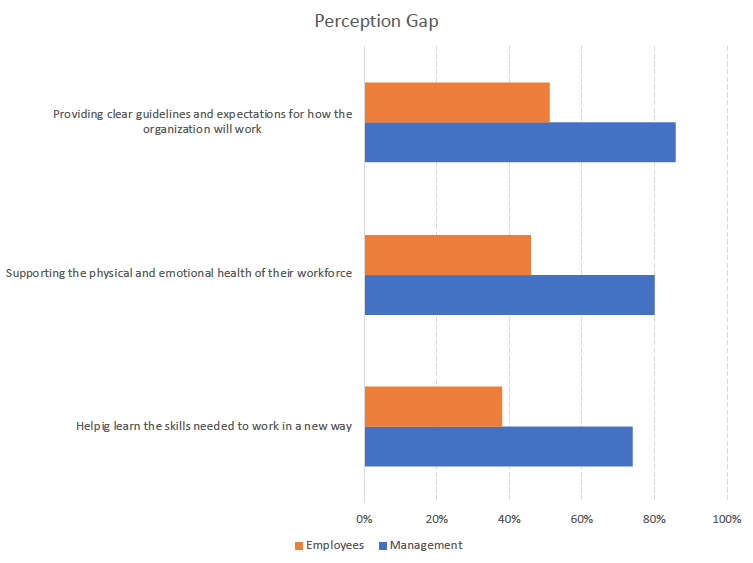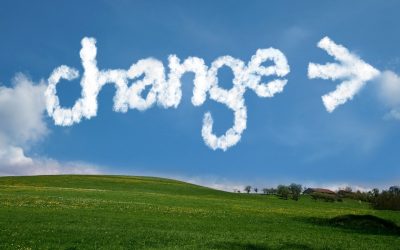As I have said repeatedly, COVID is accelerating change for all businesses, whether or not they recognize it. A recent survey by the IBM Institute of Business Value concluded that “executives must accept that pandemic-induced changes in strategy, management, operations, and budgetary priorities are here to stay.” I see three significant shifts taking place.
- How CEOs Lead
- Changes in priorities
- Changes in business models.
How CEOs Lead
- Unlocking bolder (“10x”) aspirations. COVID caused most CEOs to question their assumptions about the pace and magnitude change attainable. The realization that a change in mindset can dramatically affect goal setting and the operating model, many CEOs are effecting changes in a few months that companies previously assumed would take years. The speed for many of these changes is down to employees working longer and harder; however, many CEOs also recognize that many employees have more time available with the stop in travel.
- Elevating their “to be” list to the same level as “to do” in their operating models. With COVID, leadership has to change. CEOs’ priorities were setting up strategy, culture, and making people decisions at regular times. However, now it about maintaining morale and ensuring employees are prepared for whatever may come in the face of uncertainty. Thus, leaders are changing how they and their senior management team show up. Leaders now need to be empathetic and offer words of encouragement. According to Lance Fritz, CEO of Union Pacific, “[Employees] need to see that their leadership is vulnerable, empathetic, and making decisions in accordance with our values, which I’d better be the living proof of.”
- Fully embracing stakeholder capitalism. While I have also previously discussed embracing stakeholder capitalism; however, COVID has accelerated this trend as it has emphatically affirmed the interconnection and interdependence of businesses with their full range of stakeholders. CEOs are confronting tough decisions with profound human consequences every day. CEOs have realized that their choices are affecting their employees, communities, and suppliers. How they behave will have a long term effect on their business, especially as 87 percent of customers say that they will purchase from companies that support what they care about.
- Harnessing the full power of their CEO peer networks. As a result of COVID, CEOs talk to one another much more and at a much greater rate. The belief is, “Let’s learn from each other. Let’s hold hands. Let’s commiserate.” They are achieving this through informal networks and groups like Vistage. The power of a Peer group where you can be vulnerable and get input into these hard decisions is immense. CEOs don’t have to feel like they are carrying all the weight themselves. During the Great Recession, Vistage member companies outperformed non-Vistage member companies [. ]
Changes in Priorities
Not only are CEOs changing the way they lead, but companies are finding that their priorities have changed dramatically! According to the recent IBM survey, companies will focus more inwardly over the next two years. Their top priorities now are:
| 87% | Cost Management |
| 87% | Enterprise Agility |
| 86% | Cash Flow and Liquidity Management |
| 84% | Customer Experience Management |
| 76% | Cybersecurity |
| 75% | I.T. Resiliency |
| 65% | IoT, Cloud and Mobility |
| 58% | New Product Development |
| 52% | New Market Entry |
As companies move away from just-in-time delivery, 40% of those surveyed identified the need for space capacity in their supply chains. However, about 60% said they were accelerating their organizations’ digital transformation, and three-quarters plan on building more robust I.T. capabilities.
Changes in Business Models
Finally, many companies have also changed their business models to address market changes resulting from COVID, including some clients. Some of the creative pivots are:
- Mandarin Oriental. As mentioned last week, many high-end hotel chains are supplying alternative residences for the wealthy. MO has not only done that; it seeks to deliver the luxury experience where you are rather than at a destination. The company promotes “Staycations at M.O.” at its properties if there is one in your city. These staycations offer early check-in, late check-out, a free bottle of wine, and credits for other purchases. However, if you don’t want to leave you home, MO says, “Just call room service.” They will deliver food, items from the cake shop, supplies from the spa, or other merchandise to your house.
- JD.com. For producers of alcoholic beverages, COVID was a considerable blow. During the Chinese shutdown, its e-commerce giant, JD.com, go D.J.s and performers to stage three hour live show online. During these shows, viewers could purchase alcoholic beverages from Rémy Martin to Budweiser and have it delivered to their doors with a single click. As a result, whiskey sales from “a single partner brand” increased eightfold during a day with the show. As a result, JD.com plans to continue its live music events but to expand the products it offers.
- David Dodge. As auto sales plunged nationwide, according to the Washington Post reports David Dodge in Glen Mills, Pa., the auto dealership sold more cars in July than in any previous month in its 15-year existence. David Kelleher, David Dodge’s owner, pivoted to meet the changing market. The company created a business development center to consolidate online leads and located it prominently just inside the front door. Salespeople now work phones, email, texts, and Zoom. They are using FaceTime to accompany customers on test drives. For those customers who want to stay socially distant, David Dodge allows the whole process online, and they deliver the vehicle to the customer’s home. Kelleher and his top salesperson, Mike McVeigh, doesn’t expect to return to the old ways once COVID is behind them.
- Chipotle Mexican Grill. For a company that had been struggling with several crises over the last few years, when COVID hit, Chipotle new it had to change its business model to survive. The model was for pickup orders to be its lifeline. The company added “digital kitchens,” which handle online orders for pickup, at those restaurants that didn’t already have them, to enable this pivot. In May, Chipotle announced it would add 8,000 new workers to meet the growing demand. In July, it needed to hire 10,000 more. The company has aggressively added “Chipotlanes,” drive-thru lanes exclusively for picking up digital orders. That business model requires more employees than traditional stores—hence all that hiring is much more profitable.
Cause for Concern
All these changes are requiring more from employees in terms of working longer and harder. As I have noted on numerous occasions, empathy is needed, and burnout is a huge issue. What is worrying is that IBM’s research, drawing from other surveys that included employees, found a disturbing wide gap between “employers significantly overestimating the effectiveness of their support and training efforts” and how employees feel about these measures.

Source: IBM Institute of Business Value
As CEOs and leaders, it is critical that as you face COVID and plan for changes in leadership style, changes in priorities, and pivots in your business model, you need to do more for your employees. They are scared, uncertain, working from with kids doing school virtually, potentially overwhelming debt (see below), and they need management to support them. Those leaders who don’t rise to this challenge will see the good employees leave and create a reputation stain that could last a generation.
Recent Posts
EOS is just that, an Operating System
The EOS Model® provides a useful foundation for businesses, but it falls short in addressing key aspects of creating an growth. By incorporating additional elements from the Gravitas 7 Attributes of Agile Growth® model, businesses can create a more comprehensive system that promotes growth while maintaining smooth operations. Focusing on Leadership, Strategy, Execution, Customer, Profit, Systems, and Talent, the 7 Attributes of Agile Growth® offer a more encompassing approach to achieving success.
What has COVID done to Company Culture?
COVID has affected everyone. However, companies need to examine if they have lived their core values during COVID, how they are reinforcing them in a WFH environment, and especially with the onboarding of new hires.
Profit ≠ Cash Flow
Knowing how much cash you generate is essential for planning for growth. Too many companies don’t know and when they grow they find they are continually running out of cash. Understand your cash flow generation and how to improve it through improvements in your Cash Conversion Cycle and using the Power of One.
What Are Your Critical and Counter Critical Numbers?
The key to achieving long term goals is to define short term goals that lead you there. Focusing those short term goals around a key metric is essential. However, ensure that the metric will not lead other areas astray by having an appropriate counter critical metric act as a counter balance.
Rethinking ‘Family’ Culture in Business: Fostering Performance and Success
Explore the importance of company culture and the potential pitfalls of adopting a “Family” culture in organizations. Learn how to foster a high-performance culture while maintaining key family values and discover success factors for family businesses. Rethink the “Family” culture concept and create a thriving environment for your organization.
Do You Truly Know Your Core Customer?
Knowing the profit of your core customers is key to building a growth model. Many companies have identified core customers that are generating a sub-optimal profit and so they cannot realize the profits they seek. Identifying the correct core customer allows you to generate profits and often operate in “Blue Ocean.”
The Spectacular Rise and Fall of the European Super League
The European Super League (ESL) collapsed within 48 hours of its announcement due to hubris, a lack of value creation, and fan backlash. The founders’ arrogance led them to disregard European football’s deep-rooted traditions and culture. At the same time, the focus on wealthy club owners instead of merit undermined the essence of the competition. The fierce backlash from fans, who felt betrayed by their clubs, demonstrated the importance of prioritizing supporters’ interests in football.
When Should I Sell My Business?
Many business owners want to sell at the top of the market. However, market timing is tough. Is this the best strategy? Probably not.
Does Your Financial Model Drive Growth?
Working with many companies looking to grow, I am always surprised how many have not built a financial model that drives growth. I have mentioned before a financial model that drives growth? Here I am basing on Jim Collin's Profit/X, which he laid out in Good to...
COVID = Caught Inside
As we emerge from COVID, the current employment environment makes me think of a surfing concept: “Being Caught Inside When a Big Set Comes Through.” Basically, the phrase refers to when you paddle like crazy to escape the crash of one wave, only to find that the next wave in the set is even bigger—and you’re exhausted. 2020 was the first wave, leaving us tired and low. But looking forward, there are major challenges looming on the horizon as business picks up in 2021. You are already asking a lot of your employees, who are working flat out and dealing with stress until you are able to hire more. But everyone is looking for employees right now, and hiring and retention for your organization is growing more difficult.











